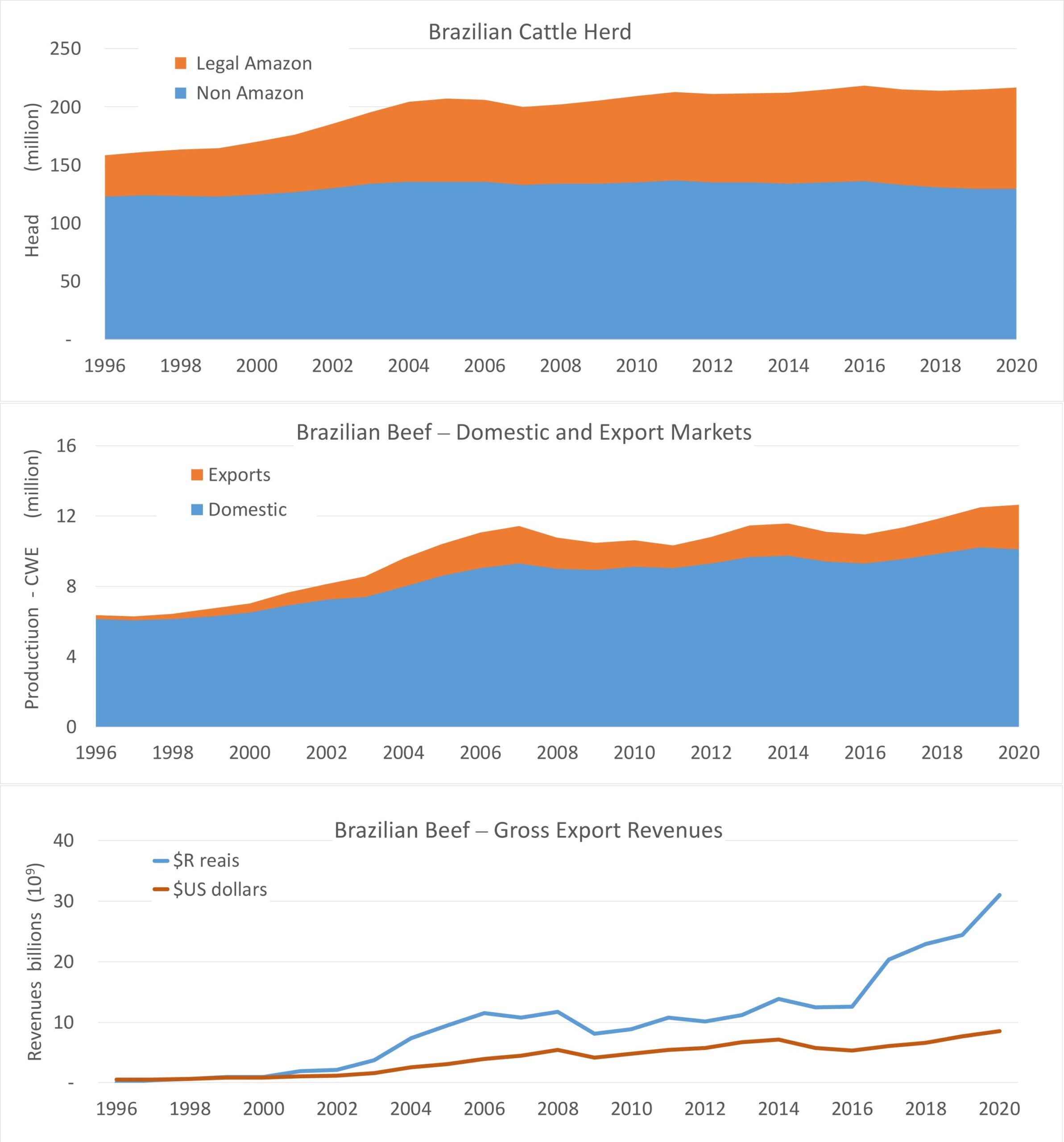- Mongabay has begun publishing a new edition of the book, “A Perfect Storm in the Amazon,” in short installments and in three languages: Spanish, English and Portuguese.
- Author Timothy J. Killeen is an academic and expert who, since the 1980s, has studied the rainforests of Brazil and Bolivia, where he lived for more than 35 years.
- Chronicling the efforts of nine Amazonian countries to curb deforestation, this edition provides an overview of the topics most relevant to the conservation of the region’s biodiversity, ecosystem services and Indigenous cultures, as well as a description of the conventional and sustainable development models that are vying for space within the regional economy.
- Click the “A Perfect Storm in the Amazon” link atop this page to see chapters 1-13 as they are published during 2023.
Brazil is both a massive producer and consumer of beef. Domestic consumption has expanded steadily year on year with slight variations linked to periodic recessions, but most of the recent growth is caused by Brazil’s increasing dominance in global export markets. Most of that growth has occurred within the Legal Amazon.
Prior to 2000, exports largely consisted of processed meat and fluctuated between five and six per cent of total production; after 2000, beef packing companies started exporting fresh and frozen beef to Europe, the Middle East and East Asian markets.
Within five years, exports represented about 20% of total national production. Exports fell by 25% during the global economic crisis of 2008 and 2009. Domestic consumption buffered the market shock, but the drop in demand reverberated through the supply chain.

The contraction coincided with an international boycott of Brazilian beef that motivated the three largest meat packing companies in Brazil to embrace the ‘Cattle Agreement’ and to eliminate deforestation from their supply chains.
The growth in exports resumed after 2012, growing at a mean annual rate of ~7% and now represent about 25%. The Peoples Republic of China began to import Brazilian beef in 2016 and rapidly scaled-up its purchases to almost 900,000 tonnes in 2020. China is now the largest international market for Brazilian beef and approximately half of those sales originate in Mato Grosso.
Exports to China from Amazonian Brazil will increase in 2021 as packing plants in Pará have been authorized to sell to the the world’s largest growing market for dressed beef.

“A Perfect Storm in the Amazon” is a book by Timothy Killeen and contains the author’s viewpoints and analysis. The second edition was published by The White Horse in 2021, under the terms of a Creative Commons license (CC BY 4.0 license).
Read the other excerpted portions of chapter 3 here:

Chapter 3. Agriculture: Profitability determines land use
-
- Agriculture: profitability determines land use October 10, 2023
- Agriculture in the Pan Amazon: Beef production models October 11, 2023
- Industrial infrastructure in the Pan Amazon October 17, 2023
- National versus global markets – beef in the Brazilian Amazon October 19, 2023
- Livestock farming in the Andean Amazon and the rest of the Amazon October 24, 2023
- Intensive agriculture in the Pan Amazon: Soy, maize and other field crops October 25, 2023
- Agriculture in the Pan Amazon: Global markets for soybean and corn crops October 31, 2023
- Agriculture in the Pan Amazon: Industrial infrastructure for grains and cereals November 1, 2023
- Agriculture in the Pan-Amazon: Swine and poultry – Adding value to farm production November 8, 2023
- Oil palm in the Pan Amazon November 9, 2023
- Palm oil cultivation in Colombia, Ecuador, Peru and Brazil November 13, 2023
- What does oil palm require to reach international markets? November 14, 2023
- Biofuels in the Pan Amazon November 21, 2023
- Coffee and cacao in the Pan Amazon November 22, 2023
- Cultivation and processing of Amazonian coffees November 28, 2023
- High quality cacao in Amazonia November 29, 2023
- Local and national food crops in the Andean Amazon December 5, 2023
- Coca in the Amazon – The anti-development crop December 6, 2023
